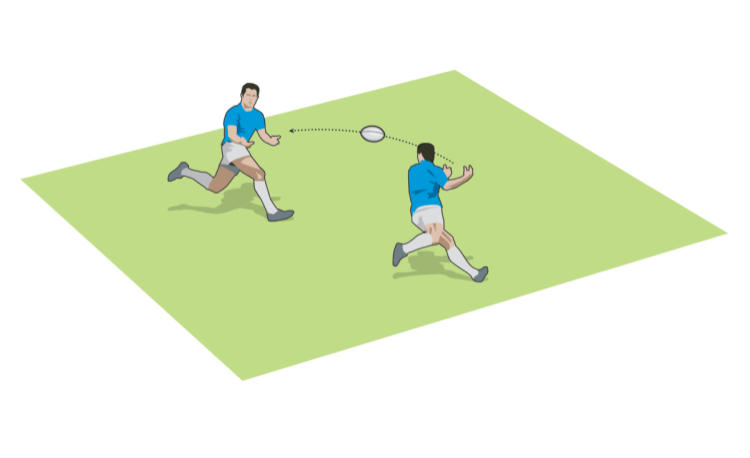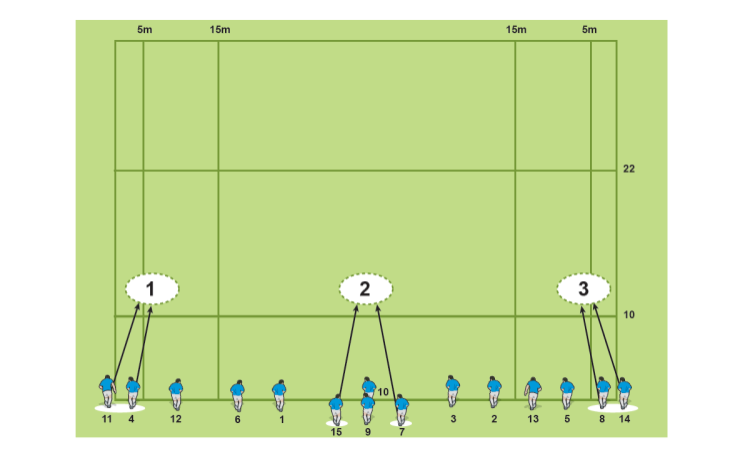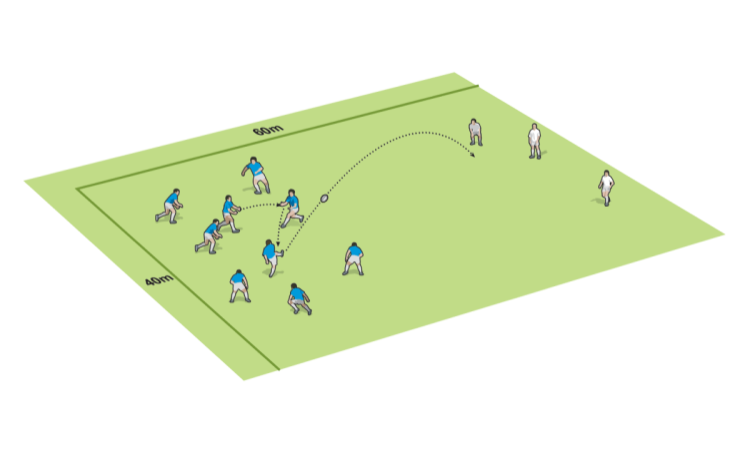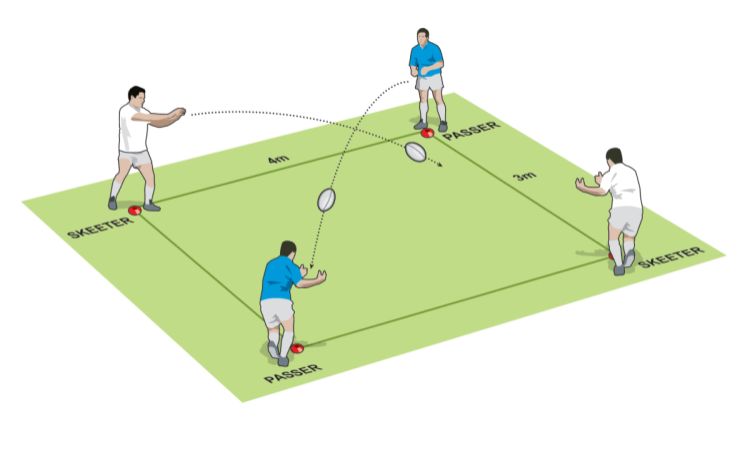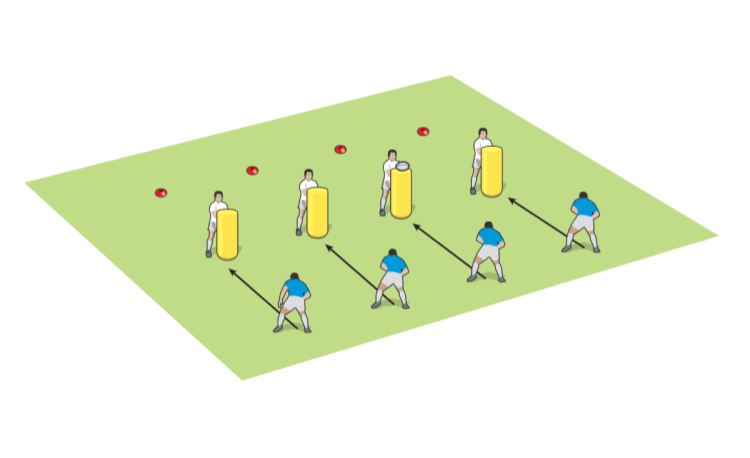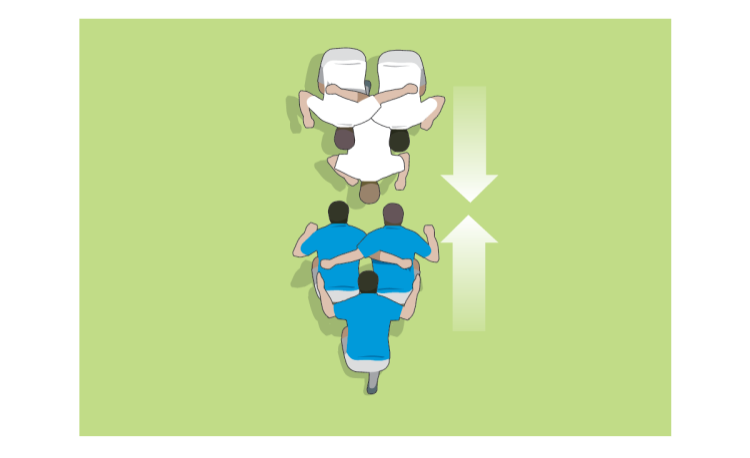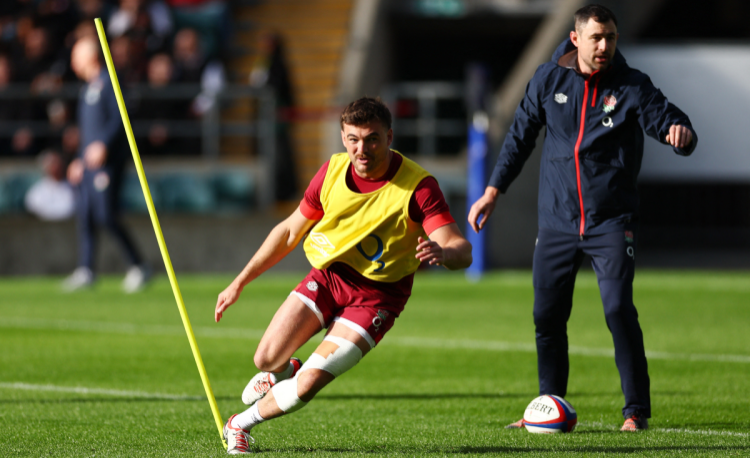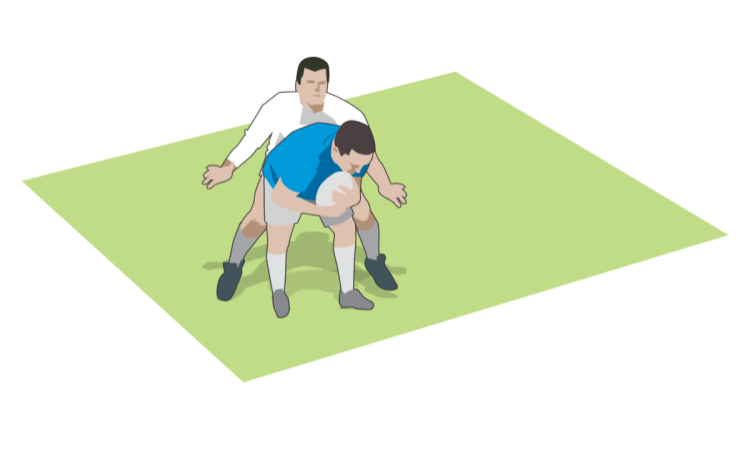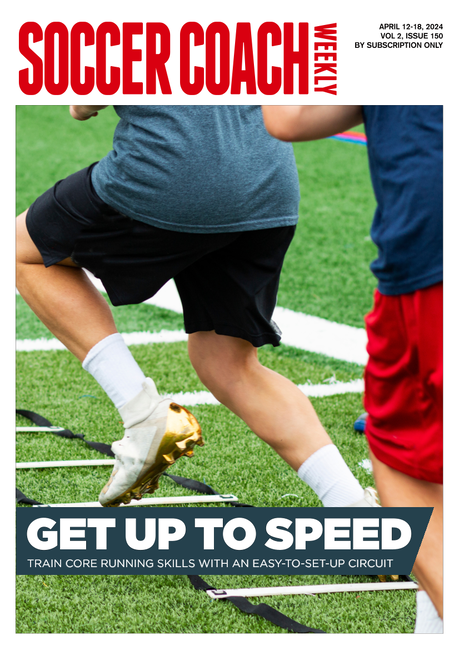You are viewing
1 of your 2 free articles
Attack the sides
Passing and Handlingby Eamonn Hogan
Start off passing in any direction to keep possession while defenders pressurise, then call a numbered try line. Attackers have to realign and all touch the ball before a try can be scored.
Set up two 20m squares side by side. Inside each square, place an equal number of attackers and defenders – between 6 and 10. Number the sides of the square 1–4 (picture 1).
Attackers pass the ball between themselves while the defence tries to intercept (picture 2). If an intercept occurs, the sides swap roles and the defenders become attackers.
When a side is called, the defence stands still – in our example “3” is called.
Attackers from both squares must score a try on the called side with every player handling the ball (picture 3). The try-scoring pass must be backwards but can be lateral, switch, miss or any other type of pass you would be happy for your players to perform in a match Defenders, although not allowed to move, can intercept the ball if it is passed to near to them.
The winners are the team that has all of their players handle the ball and score the try first. A forward pass or dropped ball is an automatic win to their opponents.
“Loud and informative, calling for the ball”. “Movement throughout the square must be sharp.” “Realign in attack to get behind the ball once a number is called.”
Here is a pressure game where the requirements for success can change in a heartbeat – just like in a real match.

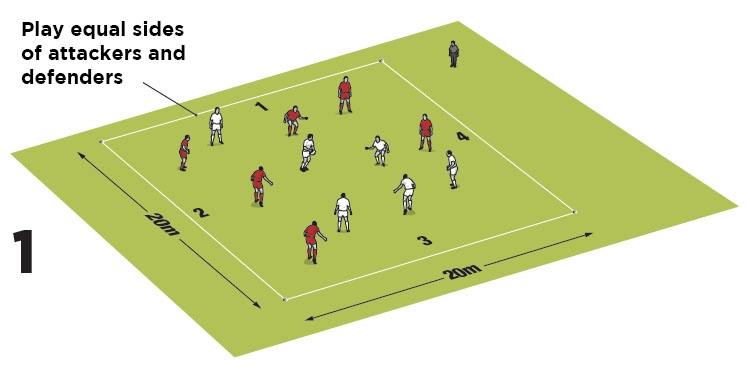
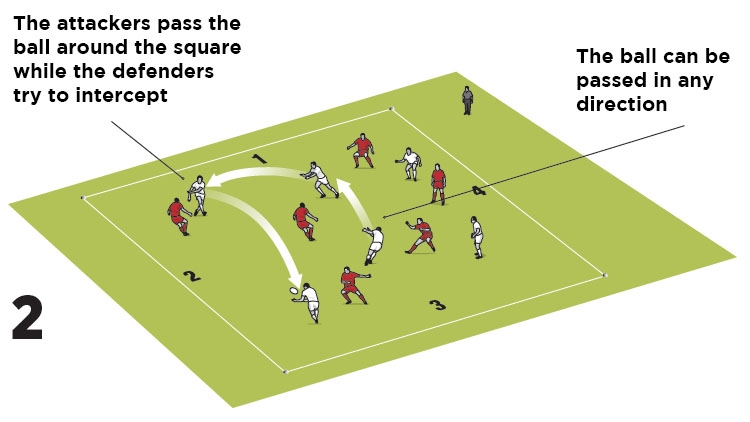
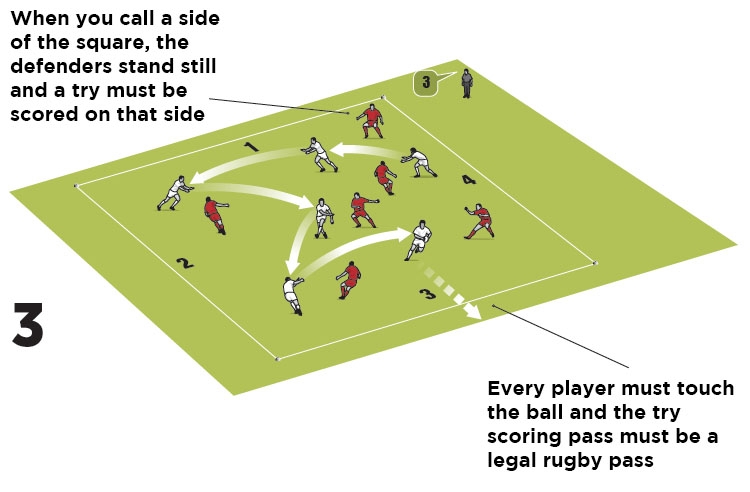

SET UP
Set up two 20m squares side by side. Inside each square, place an equal number of attackers and defenders – between 6 and 10. Number the sides of the square 1–4 (picture 1).
THE RULES
Attackers pass the ball between themselves while the defence tries to intercept (picture 2). If an intercept occurs, the sides swap roles and the defenders become attackers.
When a side is called, the defence stands still – in our example “3” is called.
Attackers from both squares must score a try on the called side with every player handling the ball (picture 3). The try-scoring pass must be backwards but can be lateral, switch, miss or any other type of pass you would be happy for your players to perform in a match Defenders, although not allowed to move, can intercept the ball if it is passed to near to them.
SCORING
The winners are the team that has all of their players handle the ball and score the try first. A forward pass or dropped ball is an automatic win to their opponents.
TELL THEM
“Loud and informative, calling for the ball”. “Movement throughout the square must be sharp.” “Realign in attack to get behind the ball once a number is called.”
COACHING TIPS
Here is a pressure game where the requirements for success can change in a heartbeat – just like in a real match.




Related Files
Vol-1-Issue-556-E-Hogan-attack-the-sides.pdfPDF, 2.2 MB
Newsletter Sign Up
Coaches Testimonials

Gerald Kearney, Downtown Las Vegas Soccer Club

Paul Butler, Florida, USA

Rick Shields, Springboro, USA

Tony Green, Pierrefonds Titans, Quebec, Canada
Subscribe Today
Be a more effective, more successful rugby coach
In a recent survey 89% of subscribers said Rugby Coach Weekly makes them more confident, 91% said Rugby Coach Weekly makes them a more effective coach and 93% said Rugby Coach Weekly makes them more inspired.
Get Weekly Inspiration
All the latest techniques and approaches
Rugby Coach Weekly offers proven and easy to use rugby drills, coaching sessions, practice plans, small-sided games, warm-ups, training tips and advice.
We've been at the cutting edge of rugby coaching since we launched in 2005, creating resources for the grassroots youth coach, following best practice from around the world and insights from the professional game.




